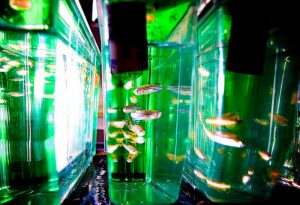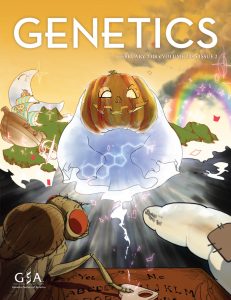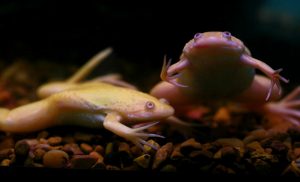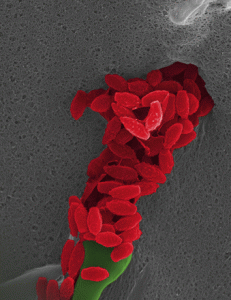Enter your address to receive notifications about new posts to your email.
Science & Publishing
-
Science & Publishing
Three GENETICS articles from 2017 recognized with Editors’ Choice Awards
Congratulations to the winners of the Editors’ Choice Awards for outstanding articles published in GENETICS in 2017! The journal’s Editorial Board considered a diverse range of articles, finding many papers worthy of recognition. After much deliberation, they settled on one exceptional article for each of the three award categories: molecular genetics, quantitative genetics, and population and evolutionary genetics.…
-
Science & Publishing
Zooming in: population genetics on a mitochondrial level
The mitochondria powering your cells are not all genetically identical. Genetic variation across the mitochondria of a single individual is common. This diversity is called mitochondrial heteroplasmy, and it plays an important role in the severity of mitochondrial disease. Problematically, the complexities of mitochondrial inheritance makes it extremely difficult to predict how this diversity is…
-
Science & Publishing
From fish tank to bedside
Yeast and zebrafish are among the lab organisms being recruited to the search for rare disease cures. Rare diseases are not so rare. About 300 million people worldwide live with the more than 7000 individual diseases that are designated “rare” by the US government. But because each of these affect so few individuals, the usual…
-
Science & Publishing
Get outbred: Genetic diversity in laboratory gerbils
Biologists rely on animal models to answer important questions that can’t be addressed with cells in a dish. Often, these animals are deliberately inbred; a less diverse population of animals means that data obtained from experiments with these animals will be less noisy and easier to interpret, so fewer animals are needed for meaningful results.…
-
Science & Publishing
Worm studies reveal cells on the move
Consider the papercut—a minor injury best known for the disproportionate amount of pain it can cause. That a wound so inconsequential can sting so terribly is curious, but perhaps even more surprising is the fact that it heals at all. To heal a wound, even one as trivial as a papercut, the cells involved in…
-
Science & Publishing
How baker’s yeast turns from friend to foe
Beer, doughnuts, and genetics textbooks have one thing in common: they were all made possible by collaborations between humans and yeast. Our fungal ally Saccharomyces cerevisiae resides not only in breweries, bakeries, and laboratories, but also sometimes in our own bodies—where, on rare occasions, it betrays us. S. cerevisiae is increasingly being reported as an…
-
Science & Publishing
Behind the cover: Drosophila Halloween genes
Fruit fly mutants can sometimes be grisly. Ecdysteroid hormones control aspects of fly development, including molting and metamorphosis; because aberrations in these genes lead to embryos with a ghastly appearance, they have been collectively dubbed “Halloween genes.” In a study published in GENETICS, Uryu et al. investigated how the expression of these genes is regulated.…
-
Science & Publishing
Using CRISPR for tissue-specific gene knockouts in Xenopus
Why study human diseases in frogs? For starters, 79% of genes implicated in human disease have orthologs in the African clawed frog Xenopus laevis. Frogs also produce hundreds of embryos that can be grown in a dish, meaning they can be manipulated in ways that are impractical on a large scale in mammals. For example,…
-
Science & Publishing
Tales told by ancient human DNA
Archaeologists have long known how to extract millennia-old stories from a single tooth buried in an ancient ruin—and now geneticists have the tools to join them. Advances made in the last several years have enabled researchers to sequence tiny amounts of DNA preserved in very old specimens, such as the material inside a tooth from…
-
Science & Publishing
Hyper-conserved sperm proteins can still evolve rapidly
The fastest-evolving genes in eukaryotes commonly encode reproductive proteins—and the rate at which genes for male reproductive proteins change, in particular, often vastly outstrips the rate of change across the genome as a whole. A recent paper in G3: Genes|Genomes|Genetics describes an unusual exception: the amino acid sequences of the most abundant sperm proteins in…
-
Science & Publishing
New in G3: Genome Reports galore, genomic prediction in cauliflower and trout, and use of a sibling subtraction method
Check out the February issue of G3! Table of Contents Genome Reports Whole Genome Sequencing of Hulunbuir Short-Tailed Sheep for Identifying Candidate Genes Related to the Short-Tail Phenotype Dafu Zhi, Lai Da, Moning Liu, Chen Cheng, Yukun Zhang, Xin Wang, Xiunan Li, Zhipeng Tian, Yanyan Yang, Tingyi He, Xin Long, Wei Wei, Guifang Cao G3: Genes, Genomes, Genetics…











